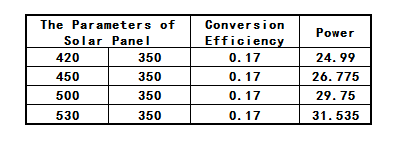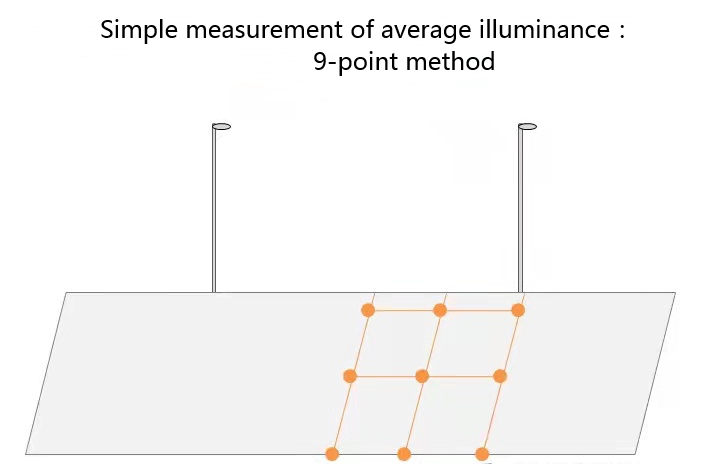
Solar street lamps are powered by crystalline silicon solar cells, maintenance free lithium batteries, ultra bright LED lamps as light sources, and controlled by intelligent charge and discharge controller. There is no need to lay cables, and the subsequent installation is very simple; No AC power supply and no electricity charge; DC power supply and control are adopted. Solar lamps have occupied a large proportion in the lighting market.
However, since there has been no specific industry standard in the solar lamp market, many friends often ask how to select high-quality solar street lamps.
As industry insiders, we have summarized several aspects and pay attention to these when selecting, so as to select satisfactory products.
1. To understand the solar street lamp LED components, there are more detailed varieties of components, mainly including solar panels, batteries, controllers, light sources and other corresponding components.
Solar panels: polycrystalline and single crystal are common in the market. It can be directly judged from the appearance. 70% of the market are polycrystalline, with blue ice flowers on the appearance, and single crystal is solid color.
However, this is not too important. After all, the two have their own advantages. The conversion rate of polycrystalline silicon is a little lower, and the average conversion efficiency of monocrystalline silicon cells is about 1% higher than polycrystalline silicon. However, because monocrystalline silicon cells can only be made into quasi square (all four sides are arc-shaped), when forming solar cell panels, some areas will not be filled up; Polysilicon is square, so there is no such problem.
Battery: it is recommended to buy lithium iron phosphate battery (lithium battery). The other is lead-acid battery. Lead acid battery is not resistant to high temperature, which is easy to cause liquid leakage. Lithium battery is resistant to high temperature, but relatively not resistant to low temperature. The conversion rate is low at low temperature. In general, the conversion rate and safety of lithium battery are higher than that of lead-acid battery.
Using lithium iron phosphate battery, the charging and discharging speed will be faster, the safety factor will be high, it is more durable than long-life lead-acid battery, and its service life will be almost 6 times longer than that of lead-acid battery.
Controller: PWM and MPPT charging controller
There are two types of charging controllers: PWM and MPPT. The cost of PWM charging controller is obviously lower than that of MPPT charging controller, but the efficiency is also low. Why?
PWM: pulse width modulation. When the solar panel generates 18V power, the charging controller must convert it to a safe 13.8V voltage for the battery. This type of charging controller will directly filter out the voltage higher than 13.8V, which will lose some electric energy. PWM technology is very simple and has been used in solar systems for decades. And the price is cheap and there are few internal parts.
MPPT: maximum power point tracking. It is a DC to DC transformer, which can convert power from higher voltage to lower voltage. The amount of power remains unchanged (except for a small loss during conversion). For example, if your panel generates 18V, 6 amps of current, the charging controller will adjust the voltage to 13.8 and increase the current to about 7 amps. In this way, the battery can get more electric energy because the total charging power has not decreased much.
Because MPPT controllers can accept higher voltage inputs, they have better advantages when connecting multiple panels together.
Light source: select high-quality lamp beads, which directly affect the illumination and stability of the lamp, which is an extremely important existence. Riya lamp beads are recommended. The energy consumption is 80% less than that of incandescent lamps with the same light efficiency. The light source is stable and uniform without flicker, high efficiency and energy saving, small heat, high color rendering, long service life and high luminous efficiency. The daily illumination is twice as high as that of traditional street lamps, up to 25LUX!
2. Lamp shell: hot galvanizing and cold galvanizing are common in the market, which can be judged by the naked eye. Hot dip galvanizing still has coating on the notch, and cold galvanizing has no coating on the notch. Hot dip galvanizing is common in the market, mainly hot-dip galvanizing, which is more anti-corrosion and anti rust.
3. Appearance: looking at the overall LED of solar street lamp is to see whether the shape and workmanship of solar street lamp are beautiful and whether there is any skew problem, which is the basic requirement of solar street lamp.

Calculation of solar photovoltaic panel parameters and common size parameters
Although the virtual standard of solar lamps can be known through some formulas, it is difficult for practitioners to judge because there are virtual standards of solar lamps from light source, battery capacity to photovoltaic panels.
Since the photovoltaic panel determines the capacity of the battery, and the capacity of the battery determines the power of the lamp, if you can know the parameters of the photovoltaic panel, you can judge the battery capacity and power of the lamp. In addition to using professional instruments, the power of photovoltaic panels can also be calculated through the area and conversion efficiency of photovoltaic panels. At present, the conversion efficiency of polycrystalline photovoltaic panels of product a is about 17%. It is not difficult to know that it is necessary to calculate its power.
Under standard test conditions, the relationship between the maximum power PMPP of photovoltaic panel and conversion efficiency is as follows: PMPP = cell area (M2) * 1000 (w / m2) * eff.
For example:

As mentioned above, although the power parameters of the photovoltaic panel can be calculated by formula, there will be some deviation between the data and the tool test due to the influence of the area density of the photovoltaic panel; However, without real parameter data, it still has reference value.
There are two factors to judge the lighting effect of a street lamp: average illumination and uniformity.
1. Average illumination. Many customers take an illuminance meter and measure it under the lamp. If the value is large, it means that the brightness is good. This is very one-sided. The lighting effect of street lamps is to illuminate the whole road very bright, rather than the place under the vertical street lamps, but the lights on both sides are not bright, showing dark areas to varying degrees. This effect of continuous transformation of dark and light will increase the driving risk of drivers, because the eyes suddenly transition from a very bright place to a very dark place, which will produce a short visual blind area, which is not easy to see the dark area in a short time, resulting in accidents. In addition, it is easy to get sleepy when driving on the bright and dark road for a long time. Therefore, the brightness reference value of the road must be the average illumination.
So how to measure the average illumination? The average illuminance of a lamp can be easily measured according to the nine point measurement method in the figure below. Within half the area covered by a lamp, measure the 9 points in the figure below, and then divide them by 9 to obtain the average value, which is the average illuminance.

2. Uniformity. Uniformity is the degree of uniformity of light hitting the road. For a road with good lighting effect, the light paves the whole road evenly, not bright and dark. Simple uniformity = minimum illuminance / average illuminance. The latest national standard requires 0.3-0.4.
Finally, based on the basic principle of seeking truth from facts, it is our original intention to make products suitable for the international consumer market and acceptable prices. We wish everyone can find suitable solar lamp products!